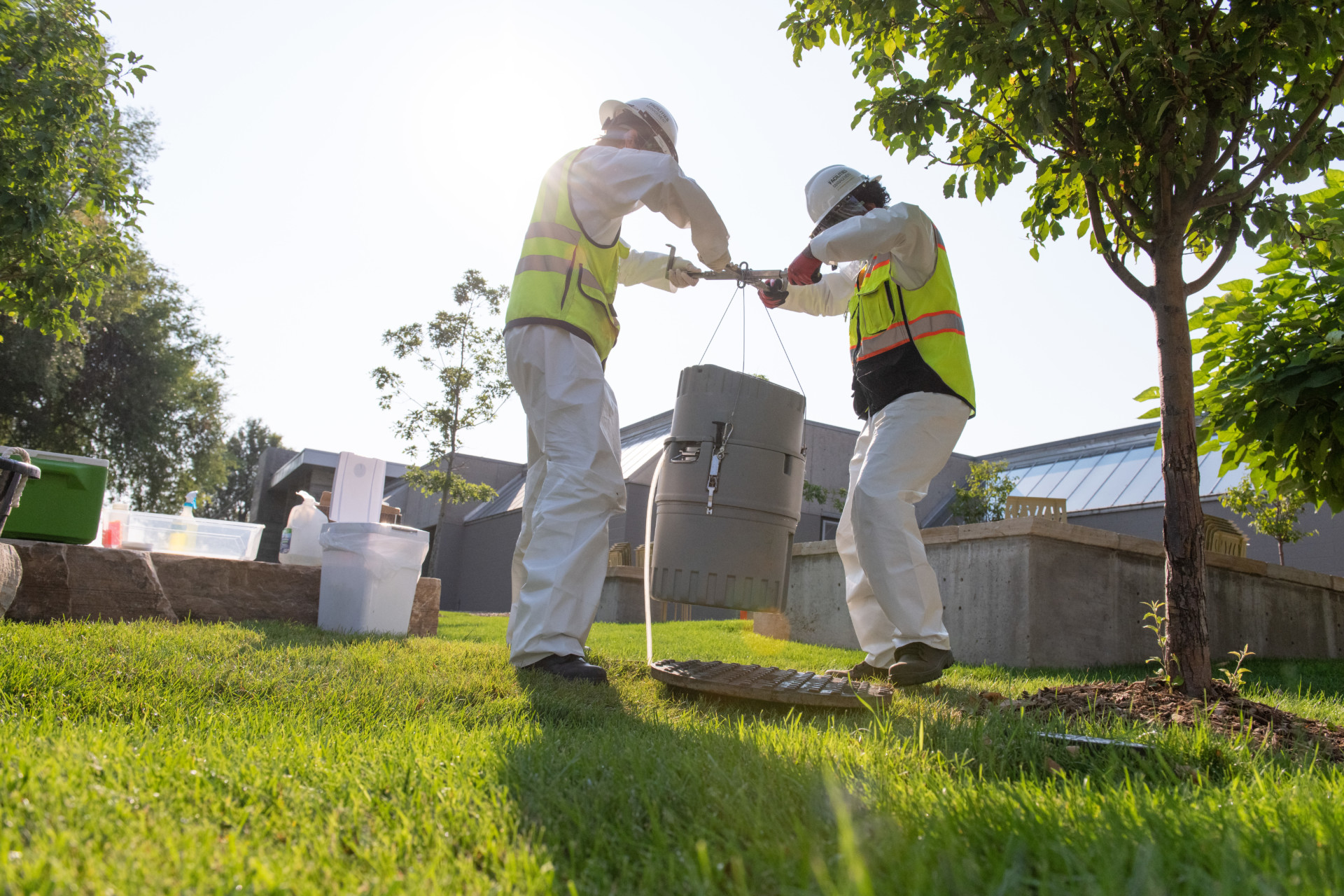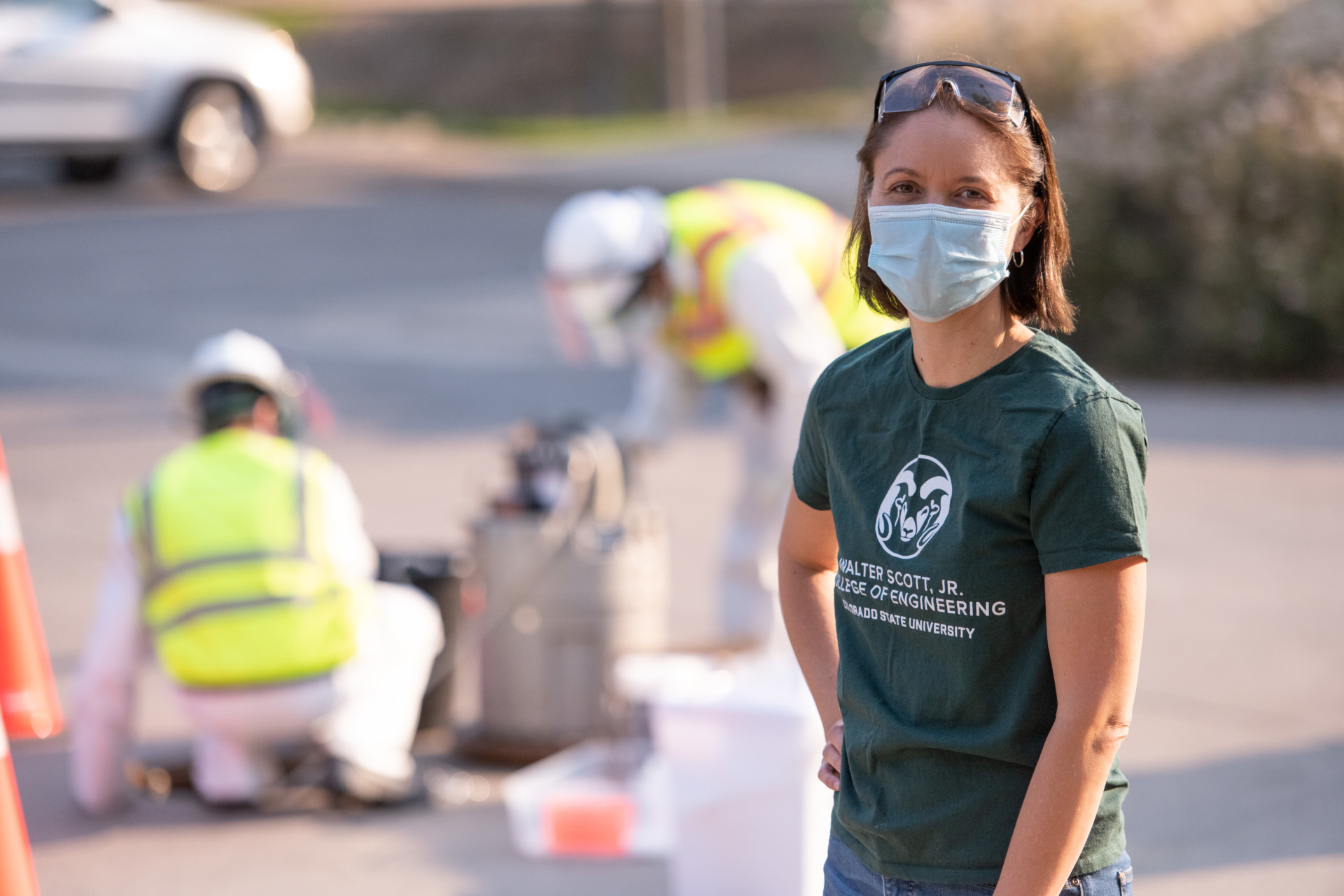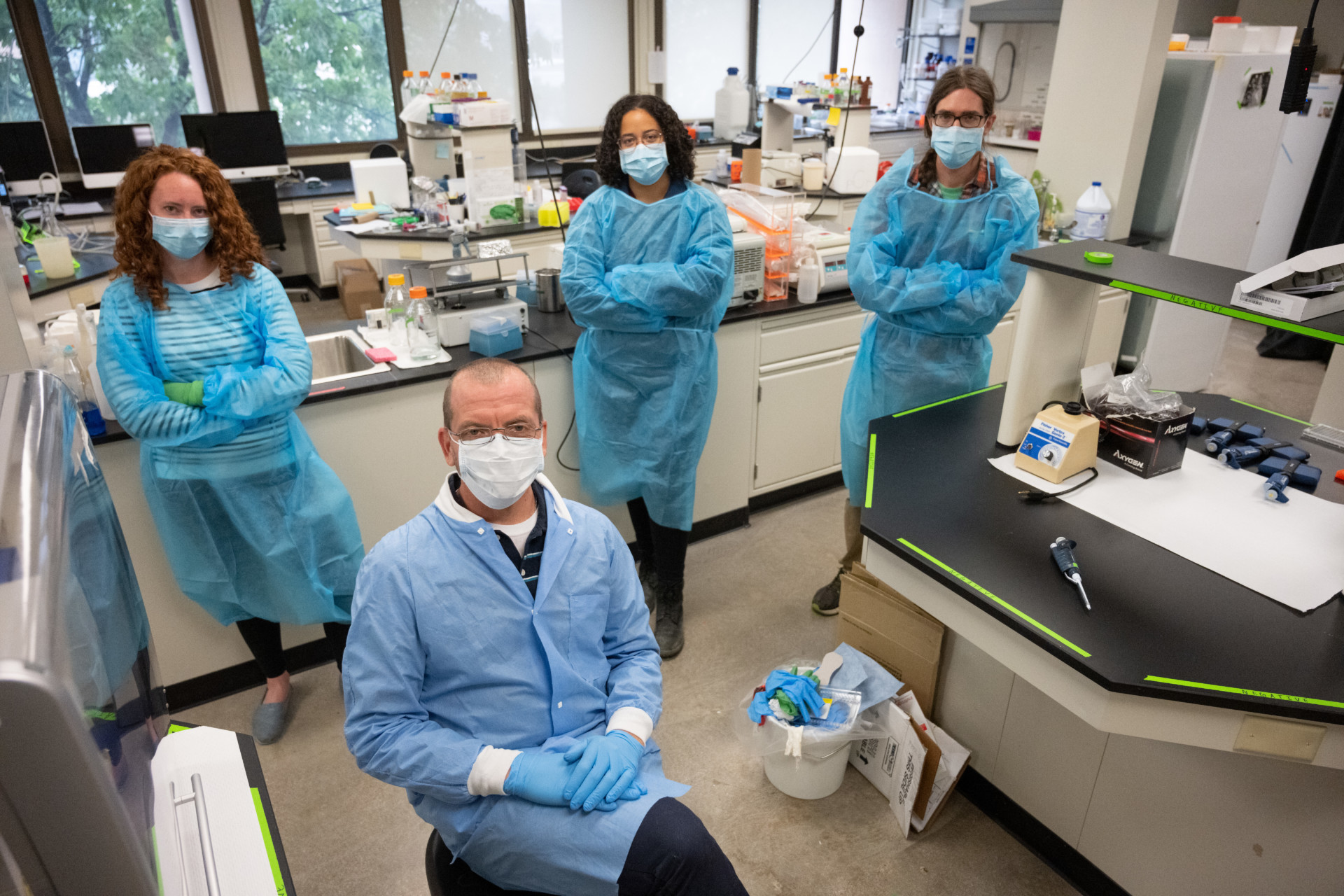Targeted Testing
A team of CSU scientists work to curb the spread of COVID-19 story by Seré Williams photos by John Eisele published Oct. 5, 2020In the classic arcade game Whack-A-Mole, as you slam the rubber mallet down on one mole that rises up, you stay at the ready to quickly knock down the next mole that emerges. Colorado State University experts have developed a similar strategy that relies on quick identification and isolation of individuals on campus infected with the virus that causes COVID-19 to whack the virus down before it spreads – and keep the number of cases they need to contend with manageable at all times.
Before students returned to in-person learning in August, CSU had developed a targeted monitoring and testing program built on research by faculty scientists and implemented by a team of on-campus experts. Dr. Heather Pidcoke, the chief medical research officer for the university, has assembled the multi-disciplinary team to manage the university’s rapid response to COVID-19.
More testing resources
CSU faculty, staff and students living off campus can get a test for COVID-19 at no cost through the Larimer County Department of Health and Environment, regardless of symptoms. The county health department works closely with CSU Public Health staff who contact members of the CSU community who could have been exposed to the virus. Go to the university’s COVID-19 Information and Resources website – covidrecovery.colostate.edu – for more information.
Those experiencing symptoms should report them immediately through the Daily Symptom Checker to alert a CSU public health official, even if they are not reporting to university grounds.
“It’s made up of experts from across the university, and the point of the team is to figure out what the data means and what to do about it,” she said. The team meets every afternoon and discusses new data, the appropriate response, and then creates a plan to tackle it.
The efficacy of this approach was borne out at the end of September, when wastewater surveillance identified a spike in viral counts from two residence halls, Braiden and Summit.
These communities were immediately quarantined and each individual promptly tested. Less than a week later, those infected with the virus were identified and isolated, while the remaining residents returned to classes – and life – as normal. Of the more than 900 students tested, fewer than a dozen tested positive.
Building a baseline

Civil and environmental engineering and students sample wastewater from one of 17 on-campus collection sites to be tested for COVID-19.
CSU has been monitoring students’ health closely since the first day they returned to campus for the Fall semester.
During the week before classes began, the university offered testing to every student moving into on-campus housing as well as to every professor and graduate teaching assistant who would be exposed to at least 50 students in a week. Out of the approximately 10,000 tests performed, only 11 came back positive. These students were isolated in quarantine spaces for 14 days.
“We felt like it would be very important to have a baseline on the people coming in,” said Pidcoke. “It’s been extremely beneficial in informing us from the beginning.”
As of Oct. 1, the university has conducted more than 20,105 tests of students (living on and off campus), faculty and staff on CSU’s main campus. Of those tests, 197 have been positive, for a 1% rate of positive tests.
The dashboard of positive results on CSU’s COVID-19 Information and Resources website also includes the results of tests of those affiliated with CSU but performed somewhere other than on campus – physicians’ offices, Larimer County testing sites, etc. The interactive website also offers a link to the daily symptom checker required for anyone coming to campus and detailed information about all aspects of the university’s response to the pandemic.
Wastewater testing

Susan DeLong, associate professor of Civil and Environmental Engineering, and students Nicholas Mohammed and Thomas Anderson, sample wastewater that will be tested by Professor Carol Wilusz’ lab on campus.
After move-in week, CSU pivoted its efforts to wastewater surveillance from 17 locations tied to residence halls on campus. Coronavirus is shed in the feces before it can be identified from the standard swab test and days before a person would develop symptoms.
Two CSU professors, Carol Wilusz from the Department of Microbiology, Immunology, and Pathology and Susan DeLong from the Department of Civil and Environmental Engineering, developed a method to collect wastewater in a 24-hour composite sample and return results for SARS-CoV-2 30 hours later.
Wastewater testing is supplemental to and helps drive nasal-swab testing, since it is used to help identify target populations to test. Targeted surveillance – in helping to reduce the spread of the virus – also can help reduce the overall cost of testing. The process used for each COVID-19 nasal swab costs $100 and includes collection and analysis by an independent company.
“When you have limited funds and limited access to tests, (wastewater monitoring) is one way that you can make the most of the funding that you have,” said Wilusz.
When a wastewater sample shows a spike in viral counts, the university focuses nasal-swab testing efforts on the people in those areas – and it’s working, according to Wilusz.
There was a bit of a signal from one residence hall at the beginning of September, she said. “It wasn’t a huge one, and (through individual testing) they found six people in there that had it.”
Saliva testing on the way

Mark Zabel (sitting), a professor and researcher in the Department of Microbiology, Immunology, and Pathology, is developing a test that uses saliva rather than nasal swabs. The team includes Ph.D. candidate Kaitlyn Wagner (left), lab manager Elizabeth Gordon and post-doctoral fellow Phil Fox.
CSU researchers have been exploring ways to make individual testing for the coronavirus easier and less expensive. Mark Zabel, also a professor and researcher in the Department of Microbiology, Immunology, and Pathology, is developing a test that uses saliva rather than nasal swabs, has the same 24-hour turnaround time for results, and will cost only $10 per test. He also serves as the associate dean for research in the College of Veterinary Medicine and Biomedical Sciences.
With the ease of collecting spit samples instead of nasal swabs, and by using a unique method of pooling samples to eliminate uninfected individuals quickly, Zabel’s lab is looking to process 1,000 tests per day. They’re currently validating their methods and ramping up to handle the logistics of sample collection. Saliva testing is expected to become available in early October.
Zabel’s lab was able to develop the saliva test through a connection with a CSU alum, Yale University Assistant Professor Nathan Grubaugh, who was part of the team that created SalivaDirect, which is being used by the National Basketball Association. SalivaDirect was granted an emergency use authorization by the U.S. Food and Drug Administration in mid-August.

Mark Zabel at work in his lab.
This targeted testing approach will continue throughout the Fall semester with the potential of ramping up both wastewater sampling locations and saliva-test sampling numbers in the spring.
“I am really proud to work with all the different experts – people with really different outlooks and expertise at CSU,” said Pidcoke. “People are passionate and committed, and they want to do things in an equitable way. People are really respectful of each other. I’m just really proud to be a part of that.”